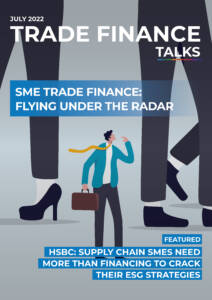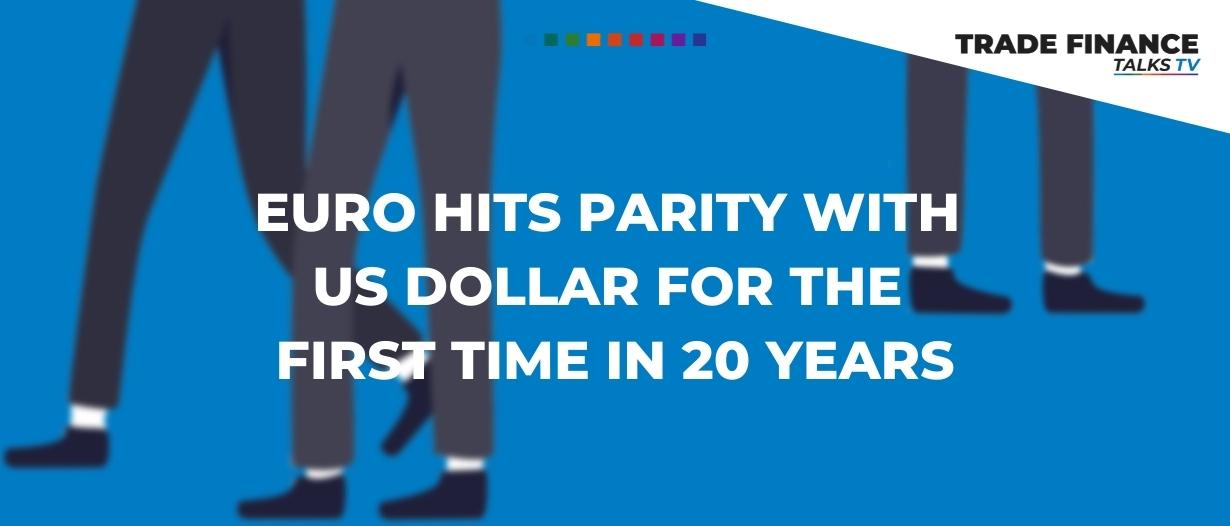After weeks of speculation and predictions of the euro’s value hitting parity with the US dollar, it finally happened this week, and the world noticed.
Bloomberg Television ran “parity watch” and worldwide Google searches for “EUR USD” hit an all-time high in the second week of July.
Most currencies are measured per dollar, so one dollar buys ‘X’ yen or francs, but in the case of the euro, the market convention is the other way around – the euro is the base currency.
With the euro having been worth $1.60 at its highest in 2008, $1.40 in 2012, and close to $1.25 within the last two years, the drop has been marked over time.
The single currency only came into existence in 1999 and, the global economy having been stressed and tested since then, it seems the trend has mostly been descending.
This has caused shifting dynamics within the market and intervening action from central banks.
Why has this happened now?
The bulk of the year-to-date drop in the euro and US dollar is thanks to a broadly strengthening US dollar, a continuing theme from mid-2021.
We can attribute this mostly to the changing economic backdrop coming out of the pandemic period – that is, one of rising inflation and rising interest rates.
In light of the war in Ukraine, the dollar received further demand, which investors turn to in times of economic or geopolitical tension and uncertainty.
As inflation has continued to rise across the world, central banks have accelerated their programmes of monetary tightening.
This has been enacted to curb demand, reduce the money supply, and stall inflation – with the US Federal Reserve (Fed) increasing the federal funds rate from 0.25% to 1.75%.
But the recent tipping point has been brought on by concerns over a gas shortage in Europe: if Russia were to shut down its gas supply, this would have far-reaching consequences.
The European Central Bank (ECB) President Christine Lagarde is of the viewpoint that whilst inflation is rising in Europe, it is mostly due to surging energy and food prices.
Core inflation in the euro area was last measured at 3.7%, versus 5.9% in both the US and the UK.
Nevertheless, the ECB recognises its need to act and has telegraphed a rise in interest rates as of its next meeting on 21 July.
The gap between European and US interest rates naturally induces a weakening of the euro versus the dollar, and the same has occurred between the US and Japan, with the yen reaching a 24-year low.
Will the euro strengthen, or will the exchange rate persist below parity?
So far, there have been a handful of brief moments where the spot price has edged below one, but the momentum, economic backdrop, and the divergence in central bank monetary policy seems to point only one way – down.
Coming up on the 21 July we have the ECB’s next meeting to set policy.
Currently, the market consensus is for a 25 basis point rate hike, in line with what the ECB has already declared.
A week later, on the 27 July, the Fed meets and will announce its latest policy decision.
Inflation in the US reached 9.1% in June, up from 8.6% the prior month and above the market’s prediction of 8.8%.
The report was released on Wednesday 13 July and was closely followed by a major increase in bets of a 100 basis point rate hike, to take US rates from 1.75% to 2.75%.
Interestingly, the Bank of Canada hiked by 100bps, possibly contributing to the market’s sense that 75 basis points is no longer enough.
Either way, the Fed will produce another bumper rate hike in its effort to distribute its monetary tightening cycle and cool rising prices.
As yet, the US economy has sustained through the increase in the cost of debt, something that Jerome Powell, chair of the Fed, has pointed out in recent weeks.
In addition to the change in the EUR USD spot rate, it’s important to note the impact of shifting interest rates on forward prices. The 1-year forward has changed from around +0.0090 to +0.0290 over the last year, meaning businesses engaging in EUR USD hedging activities will see markedly different prices for their forward contracts.
Read the latest issue of Trade Finance Talks, July 2022

























